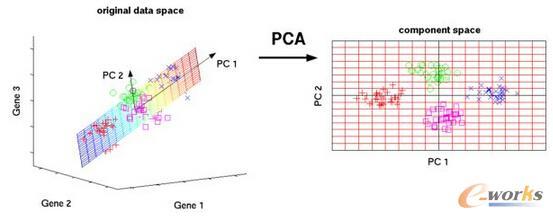Breast cancer is the second most common type of cancer in women in Canada and the United States, representing over 25% of all new female cancer cases. Neoadjuvant chemotherapy treatment has recently risen in usage as it may result in a patient having a pathologic complete response (pCR), and it can shrink inoperable breast cancer tumors prior to surgery so that the tumor becomes operable, but it is difficult to predict a patient's pathologic response to neoadjuvant chemotherapy. In this paper, we investigate the efficacy of leveraging learnt volumetric deep features from a newly introduced magnetic resonance imaging (MRI) modality called synthetic correlated diffusion imaging (CDI$^s$) for the purpose of pCR prediction. More specifically, we leverage a volumetric convolutional neural network to learn volumetric deep radiomic features from a pre-treatment cohort and construct a predictor based on the learnt features using the post-treatment response. As the first study to explore the utility of CDI$^s$ within a deep learning perspective for clinical decision support, we evaluated the proposed approach using the ACRIN-6698 study against those learnt using gold-standard imaging modalities, and found that the proposed approach can provide enhanced pCR prediction performance and thus may be a useful tool to aid oncologists in improving recommendation of treatment of patients. Subsequently, this approach to leverage volumetric deep radiomic features (which we name Cancer-Net BCa) can be further extended to other applications of CDI$^s$ in the cancer domain to further improve prediction performance.
翻译:乳腺癌是加拿大和美国妇女中第二常见的癌症,占所有新女性癌症病例的25%以上。Neoadjuvant化疗治疗最近使用率有所提高,因为它可能导致患者有病理完全反应(pCR),并且可以在手术前减少无法手术的乳腺癌肿瘤,以便肿瘤能够手术,但很难预测病人对新甲硫酸化疗的病理反应。在本文中,我们研究了利用新引入的磁共振成像(MRI)模式(称为合成相关成像(CDI$s$))所学的体积深度功能的功效。最近,新染色色色化疗治疗的使用率有所增加,因为它可能导致患者有病理的完全反应(pCRCR), 更具体地说,我们利用一个数量庞大的神经神经网络,从治疗组中学习体积深的放射线特征,根据治疗后反应所学的特征建立一个预测器。作为第一次研究,在临床决策支持中进一步探索CDI$的效用,我们用ACRI-66模型评估了拟议的方法,用ARI-C在深度预测领域应用的数值方法,从而改进了CD-CASA/ADR的预测方法,因此,可以改进了CRSMA的计算方法。



